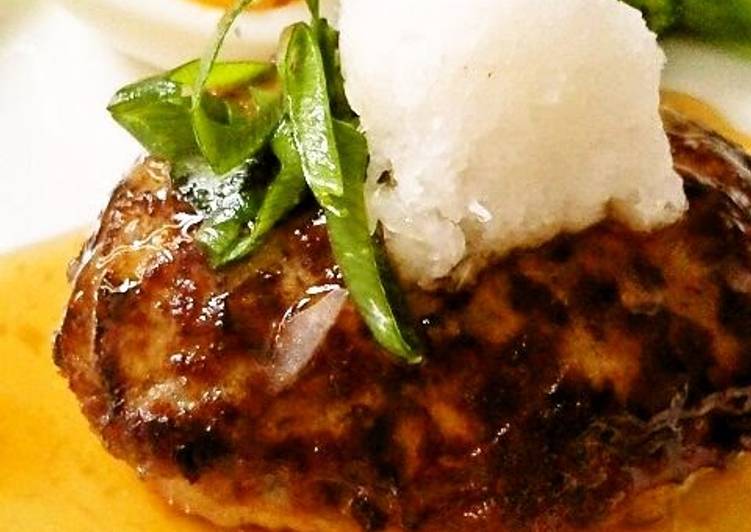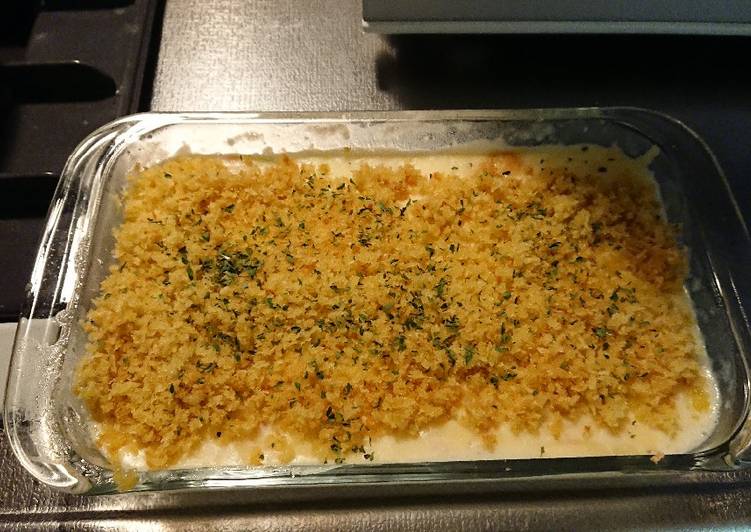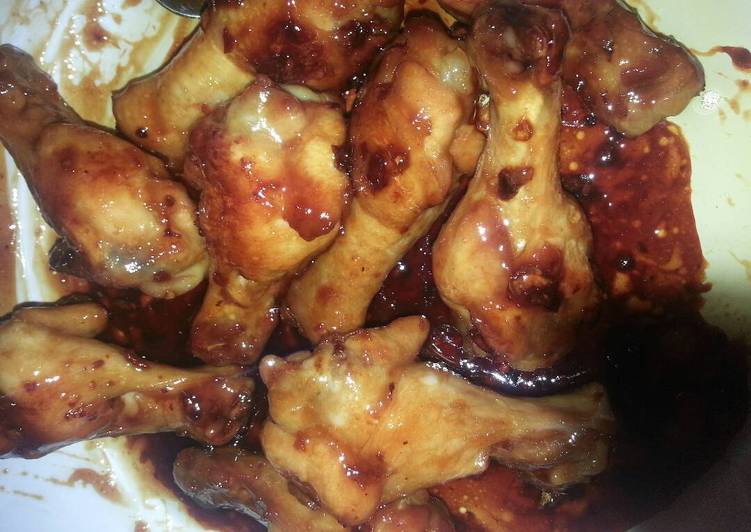
Hello everybody, it’s Drew, welcome to our recipe site. Today, I will show you a way to make a distinctive dish, plump japanese-style hamburger steaks with grated daikon radish. It is one of my favorites. For mine, I am going to make it a little bit tasty. This is gonna smell and look delicious.
Japanese Hamburger Steak (aka Hamburg or Hambagu) is one of the most popular western style foods in Japan. One of my favorite ways to eat Hamburger Steak is with Daikon Oroshi (grated Daikon radish.) Daikon Oroshi is often used as a condiment and is especially great with rather oily. Recipe: Japanese style hamburger steak (Hambaagu). Other sauces that are often used include demiglace (most often seen at yohshoku restaurants, though home cooks can buy canned demiglace), teriyaki-style sauce, or just a little soy sauce and grated daikon radish.
Plump Japanese-style Hamburger Steaks with Grated Daikon Radish is one of the most popular of recent trending meals on earth. It is simple, it is fast, it tastes yummy. It is appreciated by millions every day. They are fine and they look wonderful. Plump Japanese-style Hamburger Steaks with Grated Daikon Radish is something which I have loved my entire life.
To begin with this recipe, we must first prepare a few ingredients. You can cook plump japanese-style hamburger steaks with grated daikon radish using 17 ingredients and 5 steps. Here is how you cook it.
The ingredients needed to make Plump Japanese-style Hamburger Steaks with Grated Daikon Radish:
- Get Ground meat
- Take Finely chopped onions (minced)
- Prepare 〇 Eggs
- Get 〇 Coarsely ground black pepper
- Prepare 〇 Salt
- Get 〇 Nutmeg
- Get 〇 Panko
- Make ready 〇 Milk
- Take For the sauce:
- Get Water
- Make ready Cooking sake
- Take Soy sauce
- Prepare Sugar
- Make ready from a tube Grated ginger
- Take Katakuriko slurry (1:2 start to water ratio)
- Get Shiso leaves green onions
- Prepare Grated daikon radish
It's usually served with broiled fish, the radish adding a When used as a topping for hamburgers, you can also sprinkle some lemon juice for extra flavor. Grated daikon prevents soy sauce from running. Japanese-style condiments include oroshi daikon, made with grated daikon radish, which can be seasoned with soy sauce or ponzu dressing. Both types of Japanese hamburger steaks are commonly found in Japan.
Steps to make Plump Japanese-style Hamburger Steaks with Grated Daikon Radish:
- In a bowl, mix the ground meat, finely chopped onions, 〇 ingredients, and knead together. Knead until completely incorporated.
- In a small saucepan, boil the ingredients for the sauce. Thicken with the water-dissolved katakuriko.
- Shape the meat mixture into 4 portions, and pat out the air pockets with the palm of your hands. Line on a heated pan with oil and cook over high heat to brown both sides.
- Reduce to low heat and cover with a lid to steam cook. Cook all the way through. Stick a toothpick through, and it's done if the juices run clear.
- Arrange on a plate, top with grated daikon radish, shiso leaves, and green onions and pour the sauce over.
Japanese-style condiments include oroshi daikon, made with grated daikon radish, which can be seasoned with soy sauce or ponzu dressing. Both types of Japanese hamburger steaks are commonly found in Japan. Hambaga can be typically found at fast food restaurants (both foreign. Japanese hamburger steak is different from the U. S. version of the dish, because the Japanese hamburger patty is made by mixing ground meat and a variety of vegetables.
So that is going to wrap this up for this exceptional food plump japanese-style hamburger steaks with grated daikon radish recipe. Thank you very much for your time. I’m sure you can make this at home. There’s gonna be more interesting food at home recipes coming up. Don’t forget to bookmark this page on your browser, and share it to your family, friends and colleague. Thanks again for reading. Go on get cooking!

